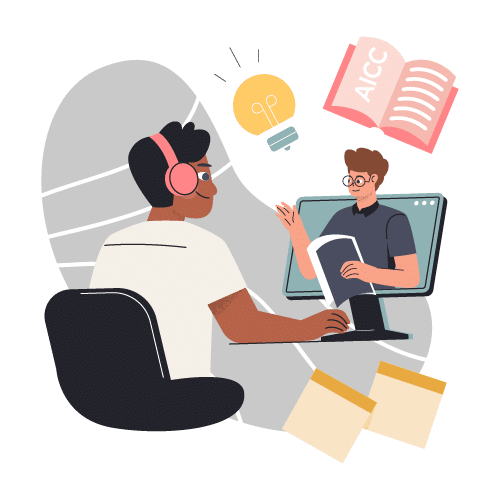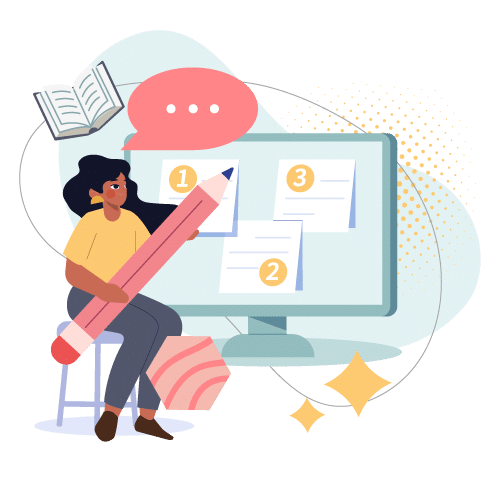In today’s rapidly evolving educational landscape, eLearning has emerged as a powerful tool for both learners and trainers. While eLearning might be commonly perceived as delivering training online, its scope extends far beyond that. In this comprehensive guide, we will delve deep into the multifaceted advantages and benefits of eLearning, understanding how it transforms learning experiences for individuals and organizations.
The organizational impact of eLearning
eLearning isn’t just about delivering content; it has a significant impact on organizations and their learning strategies. Let’s explore how it benefits organizations and learners alike.
Reduced costs
Let’s kick things off with a real-world scenario. Imagine you’re working for a company, and you need to train your employees on a new product. Traditional in-person training can be a logistical nightmare, not to mention expensive. You’d have to hire an instructor, arrange travel, and handle physical materials. Yikes! But eLearning comes to the rescue. It’s cost-effective because you can deliver training virtually, without the hefty expenses.
eLearning is a budget-saver. No more printing workbooks or booking venues. With eLearning, materials can be reproduced without a hitch, and learners can use their own devices. The best part? No more travel costs, and instructors can record sessions for on-demand access.
Multimedia materials
Now, let’s talk about spicing things up. In the world of eLearning, multimedia materials rule the roost. Imagine this: instead of plowing through endless text, you can explore a graphic, watch a video, or even share a snippet online while learning. It’s like Netflix for education! This multimedia approach increases retention and makes learning way more engaging.
Reduced costs and multimedia materials are the ultimate tag team. By trimming unnecessary expenses, you free up resources that can be invested in creating engaging multimedia materials. This multimedia-rich environment not only captures learners’ attention but also deepens their understanding, resulting in enhanced performance. When you reduce financial burdens and enrich the learning experience, you pave the way for improved performance, making eLearning a powerhouse of productivity.
Sensory engagement
Studies show that engaging multiple senses during learning enhances recall. With eLearning, the learner’s eyes, ears, and hands get in on the action. Simulations and mastery checks give learners a chance to experience the training in a safe space before applying their new skills on the job. No more fear of messing up—eLearning’s got your back.
More customization
Every person is unique, right? So why should your learning experience be one-size-fits-all? eLearning gets that. It’s all about personalizing the experience for each learner.
You can learn at your own pace, whether you’re a speed demon or a slow and steady type. This customized approach creates a learning atmosphere that’s all about you, which is fantastic for retention.
Sensory engagement ignites a spark in learners by involving their eyes, ears, and hands, transforming what could be a dull learning experience into an exciting adventure. By providing more customization, eLearning caters to individual preferences and paces, making learning a personalized journey. Together, these benefits inspire learners to embrace the learning process as an ongoing, interactive exploration, nurturing a culture of continuous learning within your organization.
Now, let’s divide the eLearning goodies into two plates: one for learners and one for trainers.
Benefits for the learners
So, what’s in it for the individual learner?
Course correction
In a traditional classroom, you might be too shy to raise your hand and ask questions. eLearning, though, is your playground. You can explore, test, and even fail (no judgment here). In-the-moment feedback helps you correct your course and become a pro in the safest way possible.
Speed
Who has time for hours of class when you can get the same knowledge in minutes? eLearning is the express lane for quick learners, saving you time and resources. Plus, if you’re using a mobile device for eLearning, you’re in for a treat: mobile users complete courses 45 percent faster. Learning whenever, wherever? Yes, please!
Learner satisfaction
We all know that if you want to remember something, you need to be happy while learning it. Bad attitudes lead to disengagement, and that’s a no-no. eLearning appeals to your heart and mind by showing you the “why” behind the learning. Plus, you can see your progress through metrics, leaderboards, and certifications. It’s like turning learning into a game, and who doesn’t love a game?
Benefits for trainers and LXD pros
Now, let’s switch roles and see how eLearning makes life easier for course developers and trainers.
Data and analytics
Data-driven insights are your secret weapon for eLearning success. They reveal how learners engage with your content, allowing you to make timely adjustments. For instance, if you observe that a significant number of your learners struggle with certain modules, you can adjust your approach, making the content more accessible or breaking it into smaller, digestible pieces. In essence, data and analytics give you the tools to mold your eLearning initiatives into highly effective and engaging learning experiences.
Related: What is microlearning?
Collaboration and team building
Have you ever tried to get a quiet class talking? It’s a tough nut to crack. eLearning offers different ways for your learners to connect outside of the office. Forums, social media, and flipped classrooms give them the tools to collaborate and build stronger, more naturally collaborative teams.
Standardization
In a global workplace, it’s challenging to ensure a consistent learning experience. eLearning solves that problem by delivering the same content. It’s like having a secret sauce that guarantees quality, no matter where you are.
Implementing effective eLearning strategies
Crafting your perfect eLearning recipe
Now, here’s the fun part: implementing eLearning strategies. It’s like cooking up a delicious eLearning dish. You need the right ingredients and a dash of creativity. So, what’s the recipe for eLearning success? Here are some recommendations and real-world examples to help you whip up the perfect eLearning experience:
1. Define clear learning objectives
Think of learning objectives as the main course of your eLearning feast. What do you want your learners to take away from the experience? Set clear and specific learning objectives to guide your eLearning journey.
Example: If you’re in the healthcare industry and want to train your staff on patient safety, your learning objective might be: “By the end of this course, learners will be able to identify and follow safety protocols to ensure patient well-being.”
2. Engaging content is key
Just like a delicious dish needs flavorful ingredients, your eLearning content should be engaging. Use multimedia elements like videos, interactive quizzes, and gamified exercises to keep learners hooked.
Example: Imagine you’re a retail manager, and you want to train your sales team on customer service. Create engaging scenarios and role-play exercises that mimic real customer interactions. Add videos demonstrating excellent customer service and interactive quizzes to reinforce the key concepts.
3. Personalization matters
Not everyone likes their pasta cooked the same way. Similarly, learners have different preferences and learning styles. Tailor your eLearning courses to accommodate individual needs.
Example: If you’re an HR professional, and you’re training new hires, offer different learning paths. Some might prefer to read through materials, while others might choose video-based learning. Let learners select the path that suits them best.
4. Assess and adapt
Like a skilled chef who constantly tastes their dish, it’s essential to assess your eLearning courses continuously. Gather feedback from learners and monitor their progress. If something’s not working, adapt and refine your courses.
Example: As a software company, you introduce eLearning for software developers. After each module, collect feedback to identify areas that need improvement. Are there specific coding challenges causing confusion? Use this feedback to make necessary adjustments.
5. Foster collaboration
Some people prefer sharing a meal rather than eating alone. Encourage collaboration among your learners. Create forums, discussion boards, or virtual classrooms for them to interact and share ideas.
Example: Let’s say you’re in the education sector, and you’re training teachers on innovative teaching methods. Set up a virtual classroom where teachers can discuss challenges, exchange teaching strategies, and learn from each other’s experiences.
6. Keep it bite-sized
Just as a seven-course meal can be overwhelming, lengthy eLearning modules can be too much to digest. Break down your content into bite-sized modules for easier consumption.
Example: You’re in the finance industry and want to train your employees on complex financial regulations. Instead of one long module, divide the content into shorter, focused modules, each covering a specific aspect of the regulations.
7. Measure progress and success
A chef knows their masterpiece is a success when the plates return empty. Similarly, measure the success of your eLearning courses through data and analytics. Track completion rates, quiz scores, and user feedback.
Example: You run an eLearning platform for professional development. Analyze how many users complete your courses and what their quiz scores are, and gather feedback through surveys. Use this data to fine-tune your courses.
8. Stay updated with eLearning standards
Just as a restaurant must adhere to food safety standards, eLearning courses should follow industry standards. Familiarize yourself with eLearning standards to ensure quality and compliance.
Example: You work for a global organization that offers compliance training. Ensure that your eLearning content aligns with international compliance standards relevant to your industry, and keep up to date as compliance standards change with new laws and policies.
Remember, creating effective eLearning is a bit like cooking—it’s both a science and an art. Experiment, iterate, and don’t be afraid to get creative. By combining these ingredients, you can craft eLearning experiences that are as satisfying as a well-prepared meal. Bon appétit!
Embrace the eLearning revolution
In conclusion, eLearning stands as a transformative force in the world of corporate training. Its advantages, from enhanced engagement to continuous learning opportunities, have a profound impact on both learners and organizations. By embracing eLearning, you can create a dynamic and efficient learning environment that keeps pace with the demands of the modern world.
This comprehensive guide should give you a solid understanding of the ins and outs of eLearning. Don’t just take our word for it; give it a try and see the magic for yourself!






